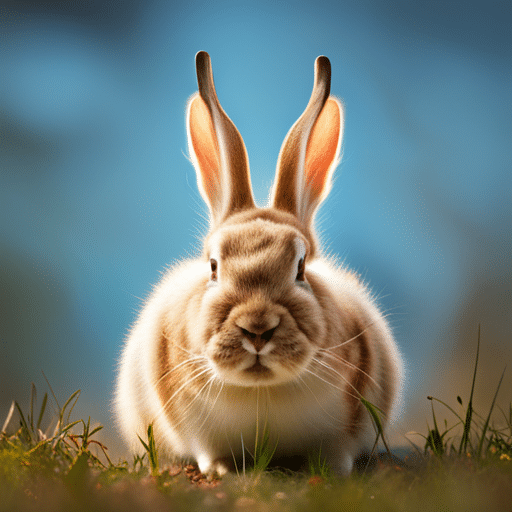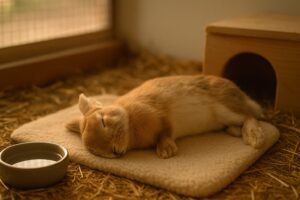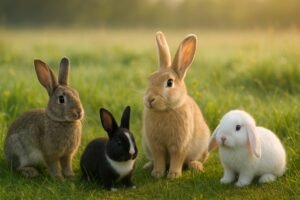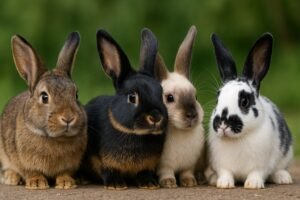Have you ever heard of a rabbit with horns? Believe it or not, there is actually such a thing! It’s called the Jackalope and this mythical creature has been part of American folklore for centuries. The Jackalope is said to be an antlered species of rabbit that looks like an ordinary bunny but with long, sharp horns protruding from its head. Though no real-life sightings have ever been documented, stories about the Jackalope have become popular over time and are often used as symbols in art and literature. In this article, we’ll explore the history behind the legendary Jackalope and how it became so famous throughout North America.
The Intriguing World of Horned Rabbits

The legend of the Jackalope began in the late 1800s when settlers in Wyoming and Colorado started telling stories of a strange creature that roamed the plains. These early accounts described an animal that was half-rabbit, half-antelope, and had massive horns protruding from its body. This mythical beast quickly became a favorite among locals, who often called it the “Jackalope” or “Wolpertinger.”
The Mystery of the Jackalope: A Rabbit with Horns
Though no scientific evidence has ever been found to back up the existence of the Jackalope, it remains a popular subject in American culture. People have speculated that the jackalopes myth may be based on a real creature, such as the pronghorn antelope or an oversized hare, but so far no one has been able to prove any connection.
Regardless of its origin, the Jackalope has become an iconic figure in American folklore and is often used to symbolize mystery and adventure. From art galleries to children’s books, this mythical creature can be found everywhere, reminding people of the power and allure of imagination. Everyone loves a good mystery, even if it comes with long horns!
For those interested in exploring the legend of the Jackalope further, here are some fun facts about this mythical creature:
• The word “Jackalope” is derived from two words – jackrabbit and antelope.
• In some stories, the Jackalope can speak in a normal voice or even whistle popular tunes.
• Many people believe that the Jackalope can only be hunted or caught during the full moon.
• The Jackalope is often used as a mascot for businesses, clubs, and organizations.
• In some Native American cultures, the Jackalope is seen as a symbol of luck and good fortune.
The Folklore Behind Rabbits with Horns
The Jackalope has become a beloved part of American folklore and continues to capture the imaginations of people around the world. From its mysterious origins to its iconic horns, this mythical creature will forever remain an integral part of our cultural heritage. So next time you hear about a rabbit with horns, don’t be too surprised – it could be a Jackalope!
Tracing the Jackalope Back to its Roots in American Folklore
The Jackalope is an iconic part of American folklore, and its story can be traced back to the late 1800s. This mythical creature has long captured the imaginations of people worldwide, but it remains a mystery as to where this unique creature originated from. Some believe that the Jackalope could be based on a real-life animal like an antelope or oversized hare, while others think it could have been a figment of someone’s imagination. Regardless of its origin, the Jackalope legend has become an integral part of American folklore and will continue to capture the imaginations of people around the world for years to come.
European Folklore and the ‘Raurackl’: Another Rabbit with Horns?
While the Jackalope is a popular myth in North America, there are similar creatures that can be found in other parts of the world. For example, in Europe, many countries have their own versions of the mythical creature known as a Raurackl or Vogel Greifer. This rabbit-like creature has horns protruding from its head and is often seen as an omen of bad luck. Despite its appearance, the Raurackl is actually a symbol of good fortune and is often used to ward off evil spirits or bring prosperity to a home.
Understanding the Jackalope: Myth or Reality?
The Jackalope has long been a source of intrigue and fascination, but its true origin remains shrouded in mystery. While some believe it to be a real species of animal, others think it could just be an example of folk-tale exaggeration. Whatever the case may be, one thing is certain – the Jackalope continues to capture our imaginations and will remain an important part of our cultural heritage for many years to come.
Physical Characteristics: What Does a Horned Rabbit Look Like?
Though there have been no real-life sightings of the Jackalope, many people have an idea of what it might look like. Generally speaking, a horned rabbit is said to be a cross between a jackrabbit and an antelope, with long horns protruding from its head. In some cases, it can even have deer-like features, such as antlers or a white-tipped tail. Depending on which legend you believe, the Jackalope can range in size from being as small as a rabbit to as large as a deer – making it one of the most unique creatures in American folklore!
Horned Rabbits: A Case of Misidentified Creatures?
In recent years, there has been some speculation that the Jackalope is not a mythical creature at all, but rather a misidentified species of animal. Some have suggested that it could be an oversized horned hare, or a type of pronghorn antelope – both of which are native to North America. While this theory cannot be definitively proven, it does help to explain why some people have reported sightings of horned rabbits.
The Scientific Explanation Behind Rabbits with Horns

The legend of the Jackalope has been around for centuries, but scientists can now explain why some people think they have seen this mythical creature. It turns out that when rabbits are infected with a certain virus, it can cause them to grow horns on their heads or antlers on their backs. This phenomenon is known as Shope Papilloma Virus, and while it does not make the rabbit any bigger, it certainly makes them look more like a mythical creature!
Shope Papilloma Virus: The Biological Basis for Horns in Rabbits
Shope Papilloma Virus is a type of virus that affects rabbits, causing them to grow horns or antlers on their heads and backs. This virus usually only affects young rabbits, with the horns then disappearing as they age. While this virus does not make the rabbit’s head any bigger, it can cause them to look more like a mythical creature – such as the Jackalope. Scientists are still unsure of how this virus is spread and why it affects some rabbits while leaving others unaffected.
Why Do People Believe in the Jackalope?
The Jackalope remains a source of fascination for many people, but why do so many still believe that this mythical animal creature exists? One possible explanation is that there have been real-life sightings of wild rabbits with horns due to the Shope Papilloma Virus. This virus is relatively common and can turn a regular rabbit into something that looks more like a mythical creature – leading people to believe in the Jackalope’s existence!
Investigating the Rare Cases of Rabbits with Bone Tumors
In rare cases, rabbits can develop bone tumors that cause them to grow horns or protrusions on their heads. While this phenomenon is much more uncommon than Shope Papilloma Virus, it does help explain why some people have seen real-life horned rabbits. Scientists speculate that these tumors could be caused by a combination of genetics and environmental factors – such as exposure to certain chemicals.
Cultural Significance of the Horned Rabbit
The Jackalope has been a part of American folklore for centuries, but it is also an important symbol in many other cultures. For example, in some Native American tribes, the horned rabbit is seen as a powerful protector spirit that can ward off evil forces. It can also be found in European folklore as a symbol of fertility and good luck. No matter where you look, the Jackalope has been a source of fascination for people around the world – and it will continue to be for many years to come.
The Jackalope in Popular Culture: Films, Books, and Games
The Jackalope has been featured in a number of films, books, and games over the years. For example, the character of Bugs Bunny is often depicted as a horned rabbit – making him one of the most iconic examples of this folkloric creature. Additionally, many video games feature mythical creatures that look similar to the Jackalope, such as Chocobo from Final Fantasy and Moogle from Kingdom Hearts. The Jackalope has also been featured in several books, including the popular children’s book series The Magic School Bus which features a Jackalope as one of its main characters. All of these examples show just how iconic the mythological creature has become over time – and it looks like it’s here to stay!
Souvenir Shops and the Commercialization of the Jackalope
Though the Jackalope is not a real species of animal, it has been commercialized in many souvenir shops across the United States. Here, one can find an array of stuffed animals, key chains, t-shirts, and other items featuring the horned rabbit. While this may seem frivolous to some, it does demonstrate how popular the mythological creature has become. Additionally, it is a reminder of how powerful folklore and tall tales can be – and how these stories have the power to shape our culture for generations to come.
The Ongoing Debate: Is the Horned Rabbit Real?

Despite its popularity, there is still some debate over whether or not the Jackalope is a real creature. While some believe it to be a misidentified species of animal, others still think that it is nothing more than a figment of our imaginations. No matter where you stand on this debate, one thing’s for sure – the mythological horned rabbit of jackalopes is sure to remain a part of American folklore for many years to come.
CONCLUSION
The horned rabbit, or Jackalope, has been a part of American folklore for centuries. In recent years, there have been explanations put forward as to why some people claim to have seen this mythical creature – such as the Shope Papilloma Virus which can cause rabbits to grow horns or antlers. Additionally, there have been rare cases of rabbits growing bone tumors that cause them to look more like a Jackalope. While this debate over its existence will likely continue for many years, one thing is certain – the Jackalope has become an iconic symbol for American folklore and it will remain that way for many years to come.



